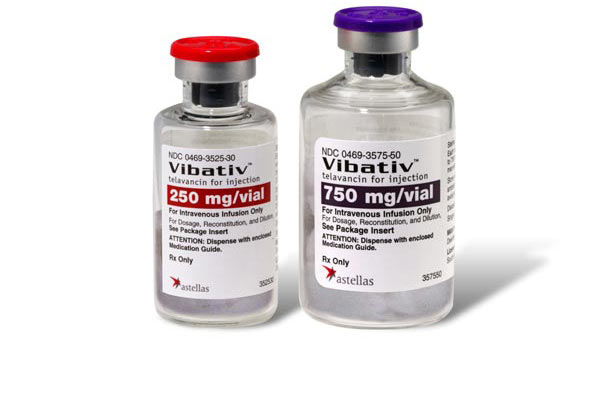
The FDA has granted approval to Vibativ (telavancin) for the treatment of HABP/VABP (hospital-acquired ventilator-associated bacterial pneumonia) caused by Staphylococcus aureus. The FDA emphasized that telavancin should be utilized only when other treatments are deemed inappropriate.
Telavancin, a bactericidal lipoglycopeptide designed for MRSA (Methicillin-resistant Staphylococcus aureus) and other Gram-positive infections, represents a semi-synthetic derivative of vancomycin. Initially approved by the FDA in September 2009 for complicated skin and skin structure infections, telavancin has now been extended to address bacterial pneumonia, a diverse lung infection caused by various bacteria.
Notably, Vibativ's approval is specific to treating Staphylococcus aureus and not extended to other pneumonia-causing bacteria. HABP/VABP, also known as nosocomial pneumonia, poses a severe threat as a hospital-acquired lung infection, particularly affecting patients on ventilators who are already in a weakened state due to underlying illnesses and compromised immune systems.
Dr. Edward Cox, Director of the Office of Antimicrobial Products at the FDA, expressed the agency's commitment to providing new therapeutic options for serious diseases like HABP/VABP, especially for critically ill patients for whom other treatments are ineffective or unavailable.
The approval process involved an in-depth analysis of data from two significant Phase 3 clinical trials – ATTAIN I and ATTAIN II – encompassing 1,503 patients, including 464 with MRSA infections. Those with HABP proven or suspected to be caused by Gram-positive bacteria were randomly selected into two groups, namely, the Televancin Group, which is comprised of people receiving televancin 10mg/kg IV once daily, and the Vancomycin Group, which receive vancomycin 1 gram IV every 12 hours. The trials compared the effectiveness of telavancin to vancomycin in treating HABP/VABP caused by Gram-positive bacteria. The trials aimed to establish the safety and efficacy of telavancin in treating HABP/VABP, and its non-inferiority against vancomycin in terms of the clinical cure rate at the test-of-cure visit. Clinical cure was determined by doctor-judged resolution of clinical signs and symptoms of HABP.
The human studies measured the percentage of all-cause mortality (those who died from any cause) 28 days after treatment began.
With the exception of patients with pre-existing kidney problems, both groups exhibited similar mortality rates. The FDA cautioned about increased mortality in patients with pre-existing kidney problems treated with Vibativ, leading to an addition to the drug's Boxed Warning. The trials also highlighted diarrhea as the most commonly reported side effect related to Vibativ therapy.
Vibativ, marketed by Theravance, Inc. in San Francisco, California, is set to become available for purchase through wholesalers in the third quarter of 2013. Rick E. Winningham, CEO of Theravance Inc., emphasized the significance of Vibativ as a crucial treatment option for life-threatening hospital-acquired pneumonia caused by Staph. aureus, including MRSA.
Dr. Ralph Corey, Professor of Medicine at Duke University Medical Center and a Principal Investigator for the Phase III Trials, underscored the importance of Vibativ in addressing the challenges of hospital-acquired bacterial pneumonia, particularly in dealing with MRSA infections, as there are a few approved treatments available and resistance to current antibiotics remain a problem. He added that Vibativ offers effectiveness in these difficult to treat infections when alternative therapies are not suitable. Vibativ has already received approval in Europe for nosocomial pneumonia caused by MRSA, further expanding its global reach. The drug is currently sold in Europe by Clinigen Group plc.
